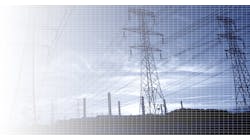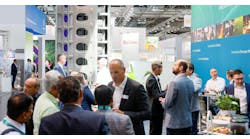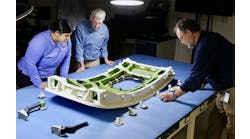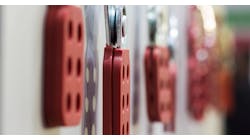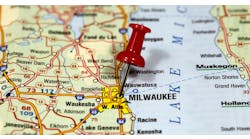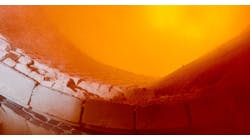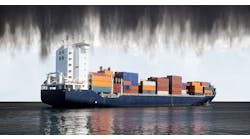Worse than the escalating prices, many metalcasters see no indication that the cost of energy will decrease or even stabilize. With no relief in sight, these expenses increase the basic cost of operations and leave little room to increase the price of products.
Many companies no longer view energy as a fixed cost, and operation managers are looking for ways to conserve energy and save money.
Lighting is one area where energycost savings may be found, with noticeable effects on daily operations and expenses. Because some operators feel they have no control over the energy bill, lighting typically is the last line item on a budget that operators will worry about or assess. But, lighting costs may represent in millions of dollars of lost revenue each year, not to mention tons of wasted energy and a negative impact on our environment.
The main reason for wasted energy and costs is that most metalcasting operations were not designed for lighting efficiency. Many of these plants may be wasting half of their energy every year using the most common type of lighting - metal halide. Metal-halide lights lose 35% of their light output during the first year of use. After three years, light output is just 30% of the original design. Even though light output decreases, energy bills don’t. The plant operators continue to pay the full light bill for less than half the light.
Here are some quick solutions for cutting energy costs:
Energy-efficient lighting — Most operations can cut lighting costs by 50 to 70% each year and have better lighting by switching to energy-efficient lights. These lights last three times as long as metalhalide lighting – 36,000 hours compared to 12,000 hours — and with longer lasting lights, maintenance costs and repairs will be reduced, too.
Sensors, controls, dimmers — In addition to energy-efficient lighting upgrades, operators can save energy by assessing traffic and workflow patterns in the foundry. Many areas are rarely used or only used at certain times of day or year. Although the low traffic areas may not be in use, typically the lights are on around the clock. Or, worse, employees are forced to walk into completely dark areas while the older lights are “warming up.”
By identifying these areas, operators can improve the work environment and save energy by installing motion sensors, on/off controls, and dimming systems throughout the facility. Such controls and sensors will automatically turn lights on when needed and off when not in use. This practice can save thousands as well as improve workplace safety by optimally lighting work areas.
Tax deductions — On top of the savings and improved work environment, operators can capitalize further by taking advantage of EPACT 2005, a federal tax deduction for energy-efficient lighting upgrades. Enacted three years ago, EPACT allows energy users to take a one-time federal tax deduction of $0.60/ft2 for upgrading to energy-efficient lighting.
These simple steps will go along way toward saving thousands of dollars every year, as well as conserve energy and improve a plant’s environmental impact. Atlas Foundry, a gray iron foundry in Marion, IN, last fall implemented these three steps — and immediately started saving money.
Atlas produces finished and unfinished castings for agricultural, construction, marine-engine, and industrial-equipment applications, as well as valves and other components for general manufacturing markets.
As at many foundries, little effort was given to reduce or conserve energy at Atlas. Until recently, the cost of lighting and energy was viewed as a fixed cost. And, according to president and chief executive officer Jim Gartland, in the poorly lit areas of the plant the atmosphere was dim and employee morale needed improvement.
To begin to understand how the company could use energy more efficiently, improve poorly lit work areas, and possibly reduce the costs of high energy bills, Atlas engaged in an energy audit. “When you spend $1.3 million a year on electricity, you are always looking for ways to save power and energy,” according to Gartland.
After installing new energy-efficient lighting, motion sensors, on/off controls, and dimming systems throughout the foundry, Atlas began saving a significant amount money on energy bills immediately, and reduced air pollution by 340,000 lb/year — or the emissions equivalent to 578 cars over the next 20 years.
According to Gartland, “The entire process was very simple and easy, with no interruption of our production. More important, I know our employees appreciate the new lighting and are pleased with an improved work environment. The atmosphere here is just better.”
Deciding to take a look at energy savings is only the first step in an important process. Many lighting companies and suppliers sell energy-efficient lights. The challenge is that every facility is different and each has distinct needs and uses for lighting. Therefore, sifting through hundreds of available lighting products to find the right solution for each facility can be time consuming at best.
The easiest solutions are those that are turnkey installations. If you are considering upgrading lighting, be sure to choose a supplier that provides the following:
- Full calculations and total tax preparation documentation for the EPACT federal tax deduction.
- On-site engineering to conduct an energy audit and installation for a full custom design.
- Available financing. Energy-efficient lighting upgrades generally provide a return on investment within two years of implementation, but most companies still choose to finance them from the energy savings.
- Haz-mat removal of older lighting.
Making a commitment to save energy will not only make a significant impact on your business and the bottom line, but will go a long way to improving the environment.
| Atlas Awarded, Rewarded for Environmental Efforts Late last year, Indiana Governor Mitch Daniels recognized Atlas Foundry for its “commitment to environmental stewardship,” as well as for the company’s Environmental Stewardship Award from Energy Management Systems Inc. Energy Management Systems supplied a new lighting system to Atlas, updating inefficient fixtures and helping to reduce air pollution by a reported 340,000 lb/year. “We are pleased to receive the Environmental Stewardship Award from EMS and recognition from the Governor’s office,” Atlas Foundry president and CEO Jim Gartland stated. “More importantly, we are pleased with the cost savings and the improved work environment for our employees.” David Riggle, EMS president, explained: “Understanding where energy was being wasted was the first step for Atlas. Their commitment to saving energy and improving the workplace for employees has made a significant impact on Atlas’ business and the environment.” |
